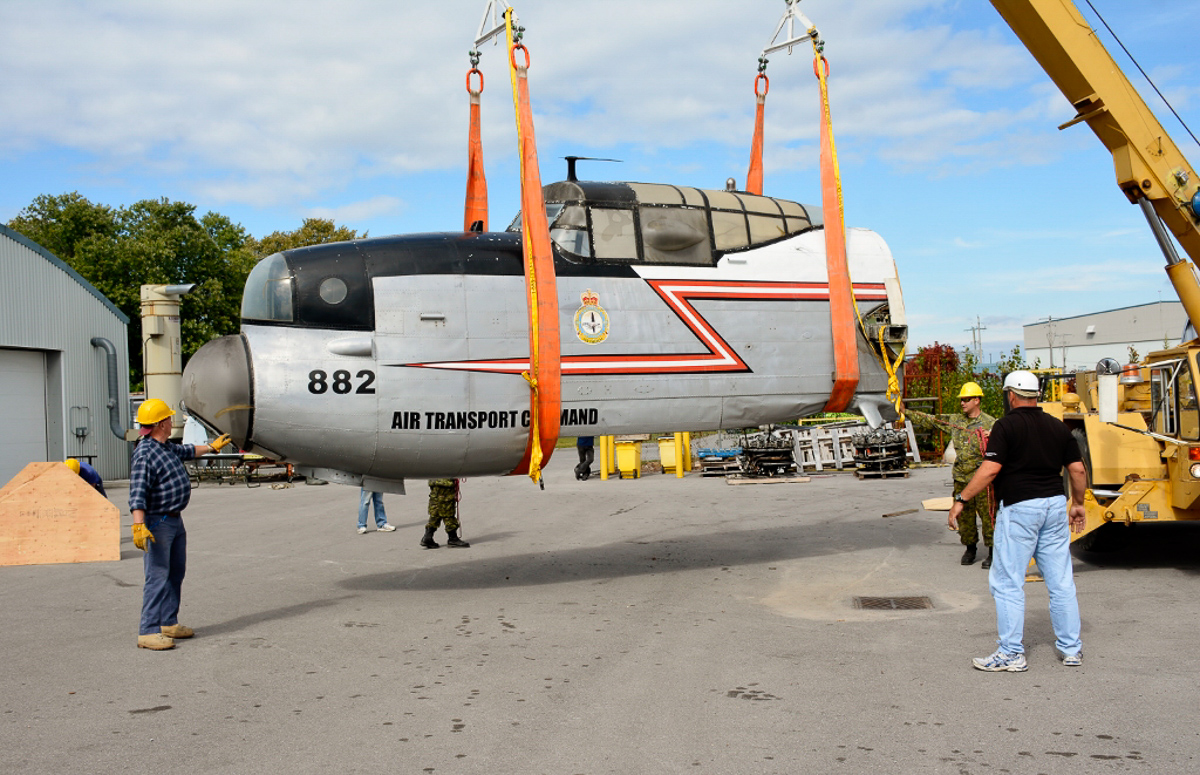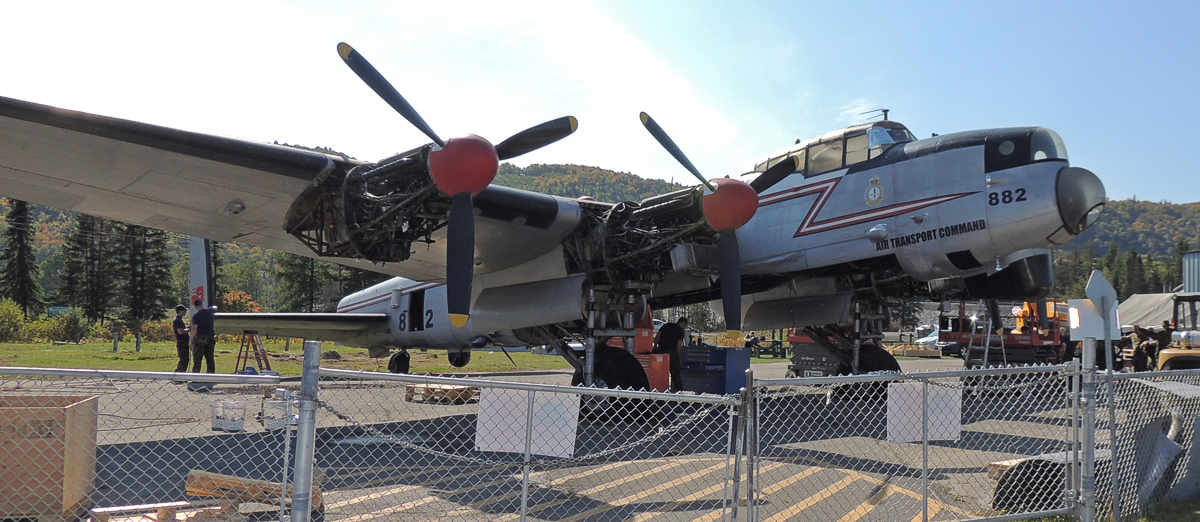After some years of uncertainty over her future, Avro Lancaster AR.10 KB882 arrived safely at her new home with the National Air Force Museum of Canada in Trenton, Ontario during early October. As we reported, the museum took ownership of KB882 in a public ceremony at Manawaska Municipal Airport in Edmundston, New Brunswick on September 20th, 2017. The WWII combat-veteran bomber had been on outdoor display in Edmundston since the end of her RCAF service in 1964. While the City of Edmundston had looked after her carefully during the past half century, there is only so long an aircraft can remain outdoors on a shoestring budget before serious problems arise. Not wanting their precious heritage to degrade further, the City reluctantly decided to part ways with KB882, but it took some time to find the right organization to ensure KB882’s preservation for future generations to come. She remains the last complete Lancaster in the world configured in her post-war, RCAF configuration, and, uniquely, still retains the extended nose of an Arctic Reconnaissance variant.
A team of military and civilian personnel from the Royal Canadian Air Force’s Aerospace and Telecommunications Engineering Support Squadron (ATESS) as well as the National Air Force Museum of Canada began disassembling the aircraft the day before the handover ceremony.
Given that KB882 had been sitting outside for so long, the team expected the process to take many weeks, with a projected completion date in late October. However, major components were already on their way to Trenton within a week of commencing disassembly.
They progressed so quickly that the wing tips and other wing components had already arrived in Trenton by October 29th.
According to the RCAF press release…
This is the third time that ATESS (or its predecessor, No. 6 Repair Depot at Mountain View, near Trenton) has worked on KB882 as the aircraft passed through their capable hands in 1954 and 1964. “It is fitting that the same unit that helped prepare KB882 for its journey to Edmundston in May, 1964 is involved now in its move to the museum in Trenton,” noted Brigadier-General Howden.
The first challenge was simply moving the aircraft forward from the grassy area where it had rested for years onto the airport tarmac, only a few feet away. First, the bomb bay doors had to be removed so slings could be placed around it. A local 60-tonne crane was engaged to move the aircraft, which has a dry weight of 36,900 pounds (16,738 kilograms). The move was accomplished in six or eight “hops” of 10 feet (three metres) each, with the aircraft being lifted only a foot (30 centimetres) off the ground with each hop forward. The move, which took a full day, was managed by the recovery and salvage support (RASS) team from ATESS.
Enthusiasm is running high among members of the ATESS team. “It’s an amazing aircraft,” said Master Warrant Officer Dean Thompson of ATESS. “The guys are keen to get the job done.
“It wasn’t built to dismantle,” he added, saying that the team is preserving whatever they can, and aiming to dismantle as little as possible to make the restorers’ work easier. He also noted that the aircraft was simply landed and put in place; there was even still oil in the engines. “It was just like tar!” he said.
Public display in 2024
KB882 will go directly into the restoration shop at the NAFMC upon its arrival in Trenton. Restoration work is expected to take five to seven years, and KB882 will then be permanently displayed inside a new wing of the museum that will be constructed to house it and other museum aircraft. When it goes on display, the NAFMC will be the only museum in the world to have in its collection both a fully restored Handley Page Halifax and a fully restored Avro Lancaster.
The grand opening and unveiling of KB882 is planned for April 1, 2024, to mark the 100th anniversary of the Royal Canadian Air Force. “KB882 will be a valuable anchor for commemorative activities, a beacon for the preservation of Canada’s history and heritage, and a shining example of Edmundston’s community spirit,” said Brigadier-General Howden.
“So, let us gather all together in 2024 in Trenton . . . to visit our old friend KB882 during the celebration of the RCAF’s 100th anniversary,” suggested Mayor Simard to the audience at the transfer of ownership ceremony.








































